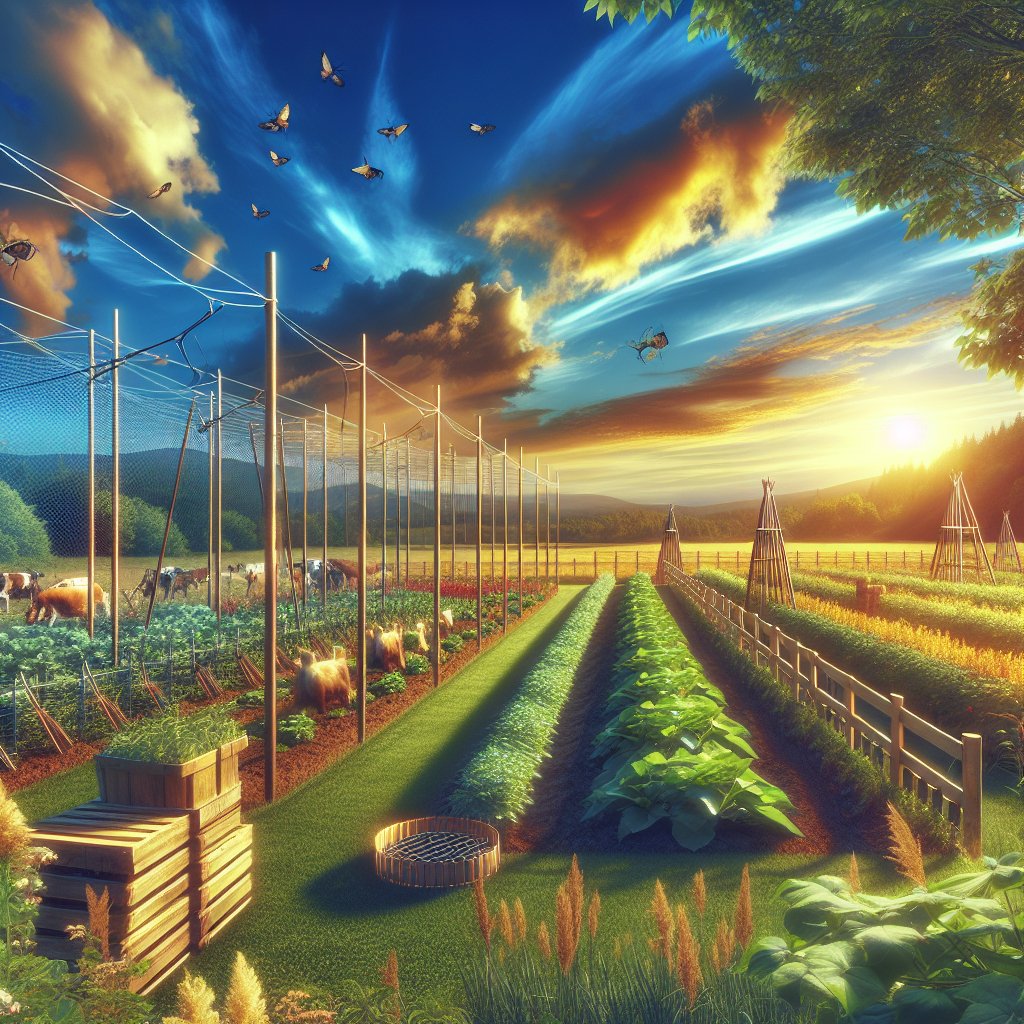
Invasive species pose a significant threat to agricultural productivity and biodiversity, making it crucial for farmers to implement effective strategies to protect their farms. These non-native organisms can cause extensive damage to crops, livestock, and the surrounding ecosystem, leading to economic losses and environmental degradation. This article explores various methods and practices that farmers can adopt to safeguard their farms from the detrimental impacts of invasive species.
Understanding Invasive Species
Invasive species are organisms that are introduced to a new environment where they are not naturally found. These species can be plants, animals, or microorganisms, and they often thrive in their new habitats due to a lack of natural predators or competitors. The introduction of invasive species can occur through various means, such as international trade, travel, and the movement of goods and people. Once established, these species can spread rapidly, outcompeting native species for resources and altering the ecological balance.
The impact of invasive species on agriculture can be severe. They can reduce crop yields, damage infrastructure, and increase the costs of pest control. For example, the introduction of the brown marmorated stink bug in North America has led to significant losses in fruit and vegetable crops. Similarly, invasive plant species like kudzu and Japanese knotweed can overrun farmland, making it difficult for native plants to survive and thrive.
Preventive Measures
Prevention is the most effective strategy for managing invasive species. By taking proactive steps, farmers can reduce the risk of introducing and spreading these harmful organisms on their farms. Here are some key preventive measures:
- Quarantine and Inspection: Implementing strict quarantine and inspection protocols for imported plants, animals, and agricultural products can help prevent the introduction of invasive species. Farmers should work closely with local agricultural authorities to ensure compliance with regulations and guidelines.
- Education and Awareness: Educating farm workers and the local community about the risks and identification of invasive species is crucial. By raising awareness, farmers can encourage early detection and reporting of potential threats.
- Sanitation Practices: Maintaining clean and sanitized equipment, vehicles, and facilities can prevent the accidental transport of invasive species. Regular cleaning and disinfection can reduce the risk of contamination.
- Monitoring and Surveillance: Regular monitoring of crops and surrounding areas can help detect the presence of invasive species early. Farmers should establish surveillance programs to track changes in the ecosystem and identify potential threats.
Control and Management Strategies
Once invasive species are detected, it is essential to implement control and management strategies to minimize their impact. These strategies can vary depending on the type of species and the extent of the infestation. Some common approaches include:
- Mechanical Control: This involves the physical removal or destruction of invasive species. Techniques such as mowing, cutting, and tilling can be effective for managing invasive plants. For animal pests, trapping and exclusion methods can be employed.
- Chemical Control: The use of herbicides, pesticides, and other chemical treatments can help control invasive species populations. However, it is important to use these chemicals judiciously to avoid harming non-target species and the environment.
- Biological Control: Introducing natural predators or pathogens can help control invasive species. This method requires careful consideration and research to ensure that the introduced organisms do not become invasive themselves.
- Integrated Pest Management (IPM): IPM combines multiple control methods to manage invasive species effectively. This approach emphasizes the use of environmentally friendly practices and aims to minimize the reliance on chemical treatments.
Restoration and Rehabilitation
After controlling invasive species, it is important to restore and rehabilitate the affected areas to promote the recovery of native species and ecosystems. Restoration efforts can include replanting native vegetation, improving soil health, and enhancing habitat diversity. By restoring the natural balance, farmers can create a more resilient agricultural system that is better equipped to withstand future invasions.
Collaboration with local conservation organizations and government agencies can provide valuable resources and support for restoration projects. These partnerships can help farmers access funding, technical expertise, and guidance on best practices for ecosystem rehabilitation.
Conclusion
Protecting farms from invasive species requires a comprehensive and proactive approach. By understanding the risks and implementing preventive measures, farmers can reduce the likelihood of invasions and minimize their impact. Control and management strategies, combined with restoration efforts, can help maintain the health and productivity of agricultural lands. Through education, collaboration, and innovation, the agricultural community can work together to safeguard farms and preserve the natural environment for future generations.

